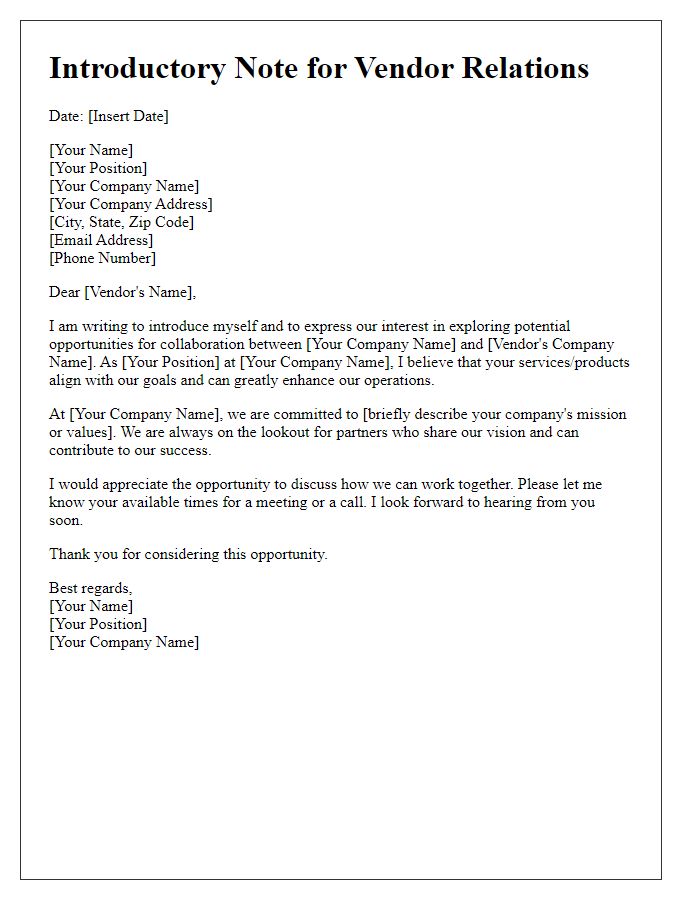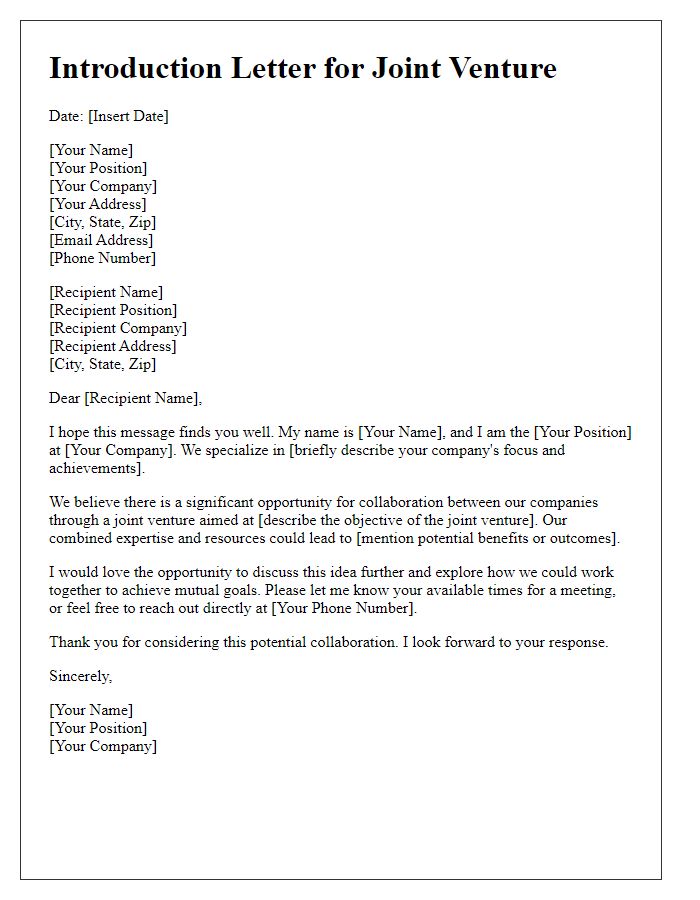Hey there! When it comes to initiating a new business relationship, the right introductory letter can set the perfect tone. It's all about making a great first impression while clearly communicating your intentions and the potential benefits of collaboration. If you're curious about how to craft the perfect message that resonates with your new contact, keep reading for some useful tips!

Subject Line Optimization
Subject line optimization can significantly enhance email engagement rates in professional correspondence. Research indicates that subject lines between 6 to 10 words tend to generate higher open rates. Incorporating action-oriented phrases such as "Increase Your Sales" or "Join Our Networking Event" captures attention effectively. Adding personalization elements, such as the recipient's name or company name, can further boost interest. Furthermore, A/B testing different subject lines can provide insights into what resonates best with specific audiences. Avoid capitalization and excessive punctuation to maintain professionalism while ensuring clarity.
Personalized Greeting and Addressing
Establishing an introductory business contact requires a personalized greeting that captures attention. Including the recipient's name (e.g., John Smith, Marketing Director at ABC Corp) alongside a respectful salutation (e.g., Dear Mr. Smith) sets a professional tone. Addressing the individual by their title emphasizes respect for their position and authority in the company. Incorporating the company name (e.g., ABC Corp) in the opening line reflects thorough research and keen interest. A tailored message reflecting knowledge of their recent achievements or challenges can strengthen rapport and engage the recipient effectively in business dialogue.
Clear Purpose and Intent
An introductory business contact establishes a foundation for professional relationships, emphasizing clear purpose and intent. Such communication often outlines goals, like collaboration or partnership opportunities, addressing specific needs of both parties. The sender may reference relevant experience or expertise, providing context to strengthen credibility. Key details about the recipient's industry or organization, such as market trends or innovative practices, can enhance engagement. Furthermore, initiatives like networking events or meetings can foster discussions, inviting reciprocal interest. Clear and concise language ensures that the message resonates, creating an inviting atmosphere for potential collaboration.
Value Proposition and Benefits
The value proposition of a software solution designed for small to medium-sized enterprises (SMEs) highlights efficiency and cost-effectiveness. By streamlining workflow processes, companies can reduce operational costs by up to 30%, allowing for reinvestment in growth opportunities. Enhanced automation features, such as integrated customer relationship management (CRM) tools, enable better tracking of client interactions and sales metrics. Additionally, the product's cloud-based platform ensures scalability, catering to business expansion without significant infrastructure investment. User-friendly interfaces facilitate rapid adoption among employees, minimizing training time and increasing productivity levels. Ultimately, this solution positions SMEs for competitive advantage in their respective markets, driving long-term sustainability and profitability.
Call to Action and Contact Information
Establishing business relationships requires clear communication and effective calls to action. Include essential elements such as the contact name (e.g., John Smith), company name (e.g., ABC Corp), and specific details about the business proposal or collaboration interests. Include precise contact information, such as email (john.smith@abccorp.com) and phone number ((123) 456-7890), enabling prompt responses. Highlight a clear call to action, encouraging a meeting or a response within a defined timeframe, such as suggesting a follow-up within one week. This structure fosters professionalism and enhances chances of engagement.













Comments